First off– let’s get this right out of the way! You say the “ch” in Yanchus like the “ch” in Charles. The man is Lithuanian not Czech.
To get a view of two universes, we must step back a little. The Marvel universe is getting to be better known. The plastic model kit one is still less so… Now, I am a concerted practitioner with one foot well planted in each. But there is one whose entirety of soul is in both.
Here’s Andy about to repair an in-store appearance “standee” with an oval cut out for a face—all ready for a Polaroid picture. Believe it or not, that is a gigantic piece of photo-stated art mounted on a piece of Masonite. Someone, either Marie Severin or Paty Cockrum—possibly Andy himself—colored it first.
What is a plastic model kit? Such a thing allows almost anyone to have a neat little replica of some sort of craft, vehicle or figure that would go nicely on your desk or shelf. With a minimum of input, glues and paints, a little elbow grease and whammo! –you have your replica.
What’s that got to do with comics? Or Andy? Anyone remember the “Rockin’ Wrestlin’ Connection”? I thought not. How ‘bout, “You smashed my chocolate bar with your peanut butter!”? Closer? Okay—one set of entertainment/hobby esoteric story and/or skills collide in popular culture.
Here’s where this collision of two “cultures” manifests itself. Andy and his good friend Legendary Creator Artist bar none Dave Cockrum! In the Marvel Editorial offices at 575 Madison Ave in about 1980. (This connection will be explored in Part II)
I got to know Andy as the on-staff Color Correction Artist person. He did all manner of eccentric-to-comic-book stuff in addition to merely coloring pages that flew by his desk. For example, in the pic above, Andy is putting together a series of “F&Gs” or folded-and-gathered (for some reason also called a “make ready”) copies of books that have been already printed. These serve as a sort of checking copy for the editorial office. Though, what good they are at this point is questionable—they reflect a book that has already been through the printing press and turned into a for-sale comic book that has been delivered to the shop! However, what Andy is making is used as a long-term record of what’s been printed. [I once needed to look up a detail during my typsesetting run on Marvel Universe—found that someone had removed the bound volume from the library—since this was 11 at night, I chewed my fingernails for a sec and moved on to the make-ready files to find a copy of the subject in question! – Sneaky Brown]
To really diverge from talking about Andy, I suppose make-readies would be valuable to make changes in future print runs—second editions—of successful comics. Of interest to pretty much no one, is that a “reprint” means going back to press with the original film but the rest of the process has to be done all over. New plates, web offset and cover press time, drying time, staple time—all that junk. But corrections in the film could be made.
Ahem—what I was delighted to learn about Andy was that he had “worked” for Aurora Models prior to Marvel. I put that in quotes because I did not know the extent to which he had worked for them.
Born in Brooklyn, though you’d not know it from his rather flat accent. He was always interested in aviation model-making. There was fairly simple stuff back around then—you essentially were given half-carved blanks of wood– but the 1950s were very exciting times for air power and aerospace subjects. Interestingly, he always thought he wished to get into the engineering end of the hobby industry. Maybe he would try real airplanes though—so he made it into the High School of Brooklyn Tech, an all-boys school, where he majored in aviation.
That didn’t quite work as hoped for but his academics were good enough to get into (the fairly illustrious) Pratt School of Industrial Design! He was top of his class in Production Methods and Industrial Design. What does that mean? He was taught how to approach making things from a material perspective. Metal things need one method, wood another, plastic yet others.
Here’s where Andy’s forward momentum gets congested. Upon graduation, he brought a portfolio of industrial drawings and photos of some of his models to Aurora Plastics! They asked if he could start Monday. Alas, America had entered the “hot” phase of the Viet Nam Conflict and Andy was drafted. Off to Basic Training he went.
Andy struggled through Basic and at about the halfway mark—4 out of 8 weeks—he was shipped off to what he referred to as “Fat Boy Squad.” He tried harder and injured his back. That got him hospitalized and even as he fought on, he was released after about five months.
In about 1965, back in The World, he re-entered Aurora. The same fellow, the Brit Derek Brand, who’d asked if he could start Monday, now handed him a block of wood and asked if he could make it look like a Porche 904. Andy could and did—making slot cars for him and Aurora for years.
By the time Andy got to Aurora, it was the hey day of modeling. In 1950, Aurora had started in a garage out on Long Island, NY making small plastic parts. Then tried their hand at airplanes—then ships and figures. Fifteen years later, they were making cars! Then slot cars!
Slot cars are tiny car bodies wrapped around an electric motor. The slot in a table, simulates a race track, on either side of the slot is a metal strip that conducts electricity to that motor. Into the slot goes a central flat gadget (skeg? blade?) that keeps the car running down the middle of the track. Apply the juice and ziiiip!
Here’s his Aurora ID card! Just look at that earnest young man. I screen grabbed this off of the video below. Make sure to go see his video about some of his time there—
The Aurora Monsters – The Model Craze That Crippled The World! Well worth the money and you’ll get interviews with people you never thought you’d see (James Bama!). Hosted by Zacherly himself!
Here’s a stand out bit of craziness for Andy. Aurora had the utterly zany idea of setting up a competition between real race car drivers. Give them a set of slot cars to practice with and then—get this: set up a big track on The Ed Sullivan Show and let ‘em at it! Prize money? No small amount then or now: $50,000!
Such was “big idea” advertising in 1970!
Andy may have been a great modeler, but not as good keeping his eyeline on the camera! You can always pick out Andy from his giant shock of hair. Andy has so much hair, you could stuff a mattress with it.
I am indebted here with scans from Scale Talk magazine from back in the day. It was a scale slot car community magazine devoted to all things slot car!
The other stand out, to me, was that Andy (and Mr. Brand) built up a relatively gigantic model of The Black Beauty and a Chevrolet convertible for the hit TV-show The Green Hornet. For those who don’t know, The Green Hornet was made by the same production company that gave us the 60s Batman show. It was conceived as being more serious and it was. A high point in fantasy TV of the time. Plus the coolest theme song, period.
It was also Andy’s design work on The Black Beauty that wound up in the actual Aurora plastic model version. Which, for a few details that he’s not happy with, is a really nice kit. The original release is very high priced and even the “re-pop” several years later, is up there.
When Andy informed me that the super cool scene where the Beauty and the star’s regular ride get clamped to a flip-o table/floor in the garage was done with miniatures (a 21” long Black Beauty!)… I was speechless. And Andy was a part of the team that built it. He also provided design drawings for the project. Afore-mentioned Tom Kowalski machined the metal parts. The build was neck-and-neck with reality as they also had to build the interior—and the Black Beauty was being built for real back in Hollywood. As soon as photos from the builder (Dean Jeffries!) came in, details were made and installed.
Andy spent ten years at Aurora, mostly working Research & Development. Part of that job was building the first “shots” of plastic kits to troubleshoot that process. Any modeler’s dream job. Many classic model kits that are still being made today (those molds that stamp out the plastic can last a long time!) are ones that Andy worked on directly. The original owner of the company, Abe Shikes, remarked that Andy should be paying them because he was having too much fun. And I believe it.
I recommend to anyone interested to find:
Thomas Graham does an excellent job of putting Aurora it its place within several decade’s of popular culture. Describes the rise and fall of Aurora—introducing the idea of “too much success!”
This is Andy’s (and Dennis Princes’) own account of his work on Aurora’s Monster Scenes. Now a book so outrageously priced– the curse of a low print run and a high interest—this lowly enthusiast cannot afford it! The title says it all. It’s either seen as good fun or de-baser of children’s minds…
In these ways, Andy achieved his ambition of being involved in a hobby industry. I see plastic modeling as more than that. There’s more serious, big ticket modeling done today than ever before. The Japanese, Chinese and Russians are busting in with very well made original subjects. Movie and TV subjects, re-casts of old TV and cartoon subjects. A lot.
End of Part 1.
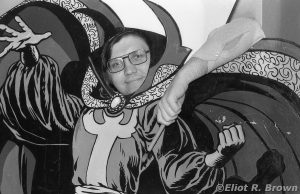
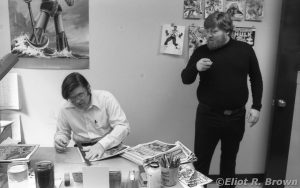
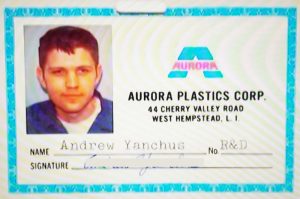
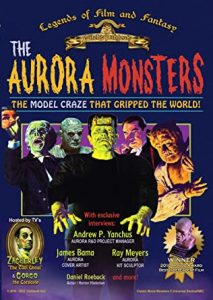
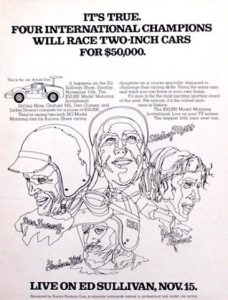
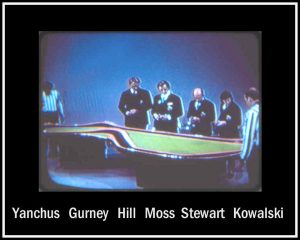
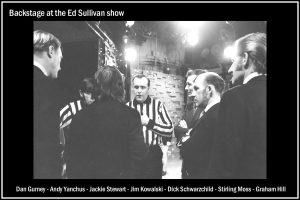
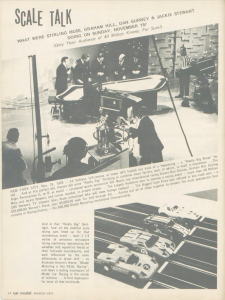
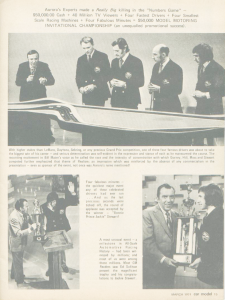
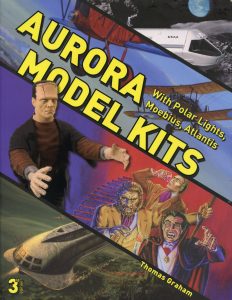
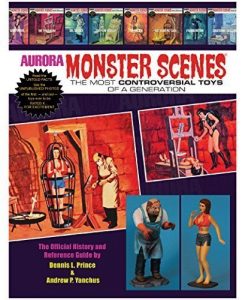
Amaziing Eliot!